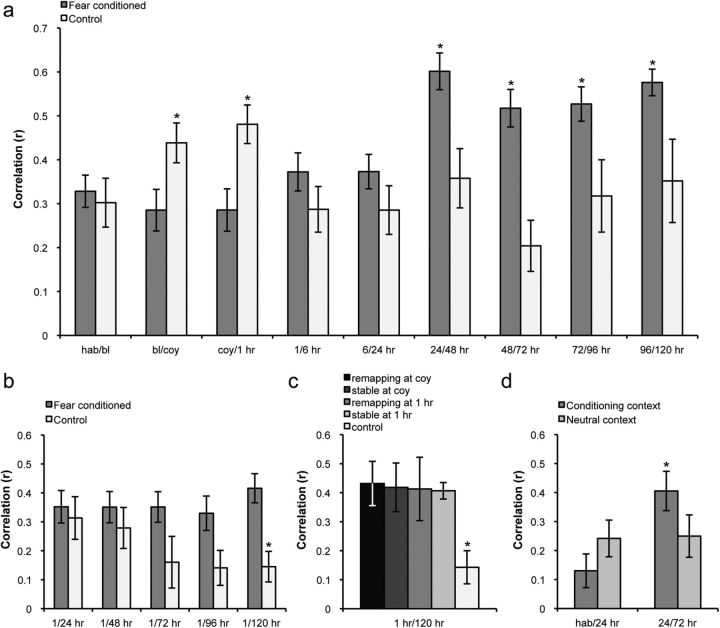Figure 5.
a, Average place field correlations indicating stability over time. The control group exhibited high short-term stability, while the fear-conditioned group exhibited remapping during both the conditioning and 1 h sessions. In the long term, only cells in the fear-conditioned group displayed increases in stability beginning at 24 h postconditioning. b, Average place field correlations between the 1 h session and each long-term test session. The maps stabilizing in the long term resembled those formed after predator odor exposure, as evidenced by continually high correlations between the 1 h session and each of the long-term sessions. Conversely, control animals exhibited a steady long-term decrease in stability in corresponding sessions. c, All cells tended to form maps in the long term that resembled the 1 h session regardless of whether they showed short-term remapping or stability, and were significantly different from the average correlation between 1 and 120 h of all cells in the control group. Histogram shows average correlations between 1 and 120 h sessions. d, Place field stability in the training context compared with a neutral context in fear-conditioned animals. Between 24 and 72 h, there was an increase in stability that was specific to the training context. hab, Habituation; bl, baseline; coy, coyote. Means ± SEM are shown. *p < 0.05.

